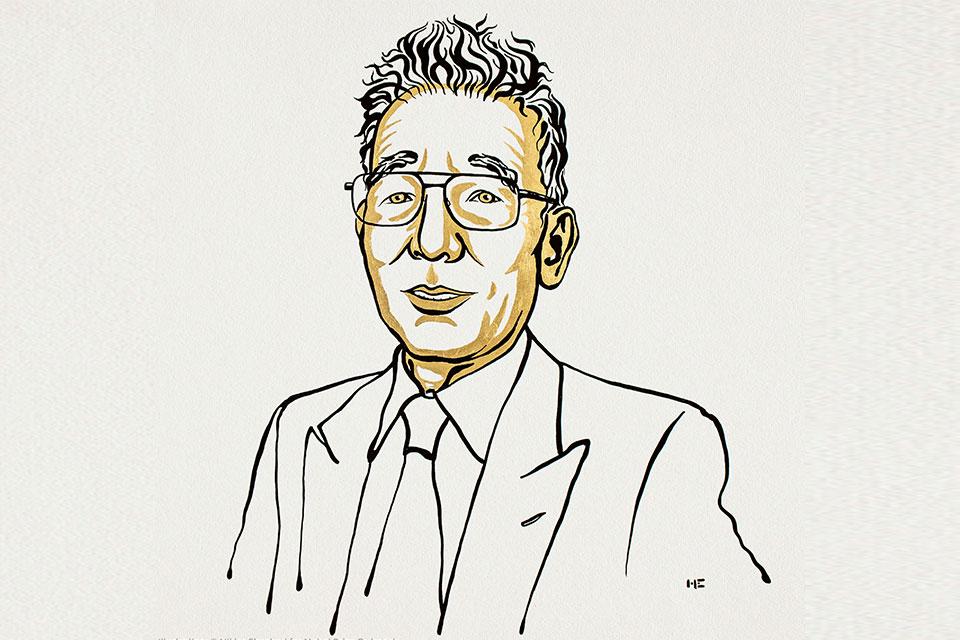Having followed in his footsteps at the Princeton Geophysical Fluid Dynamics Laboratory, Halley Professor of Physics Raymond Pierrehumbert reflects on Syukuro Manabe’s Nobel Prize-winning work.
I am sure the whole climate science community woke up with joy on 5 October 2021 upon finding that Syukuro (known to all as ‘Suki’) Manabe had been awarded the Nobel Prize in Physics, together with Klaus Hasselman and Giorgio Parisi. Certainly, I did.
The understanding of the Earth, or indeed any planet, is a problem in physics building on landmark developments of some of the greatest minds in physics over the past century or more. The phenomena of climate are emergent phenomena which arise from the interaction of basic physical building blocks such as Newtonian mechanics, statistical thermodynamics, electromagnetic theory, quantum theory and radiative transfer. Climate physics spans great distances in time and space, the more so with the opening up of the frontier area of exoplanet climate, but the climate physics problem that most pressingly concerns most of the inhabitants of our own dear Earth is the problem of the climate disruption resulting from human-caused increases in the stock of carbon dioxide in the atmosphere – and it is here that Suki made his mark.
A pioneer
He was the first to put together all the relevant building blocks in the correct way, and make the first prediction of the amount the climate would warm as a result of doubling atmospheric carbon dioxide to be based on a fully physically correct formulation of the problem. He implemented state-of-the art results on infrared spectroscopy of water vapour and carbon dioxide in a computationally efficient way, but even more importantly he brought in the critical fluid mechanical effects of stirring by convection, which had been essentially neglected in previous treatments of the problem. Later, he accomplished the first simulations which captured the large-scale fluid motions of the atmosphere and the way they respond to carbon dioxide increases. The same simulations for the first time predicted the water vapour feedback as an emergent phenomenon from fundamental physical principles, rather than imposing it as an assumption.
In my mind, the appearance of the latter work in the early 1970's marks the end of the time when humanity could deny that ending the burning of fossil fuels is essential to the future of our species and most of the ecosystems with which we share this good, green Earth. Many of the predictions made by Manabe's work at this time were borne out in observations that emerged from the background noise level of climate many decades later. It is splendid to see this work recognised as one of the great triumphs of physics.
An inspiration
But for me, Suki's prize had even more personal resonance because my acquaintance with Suki goes all the way back to my PhD work at Massachusetts Institute of Technology (MIT). I did most of my calculations for the thesis at Suki's home institution, the Princeton Geophysical Fluid Dynamics Laboratory – a US government research institute affiliated with Princeton University. At the time, they had one of the most powerful computers in the United States: a Texas Instruments Advanced Scientific Computer with a whopping 400 MB of main memory and throughput of 40 megaflops. This made it possible to do what were then computationally intensive problems like finding all the eigenvalues of a series of 500x500 complex matrices. The fellow helping me with my programming (punch cards!) was Bob Strickler, who was Suki's programming staff member and who co-authored Suki's landmark convective adjustment paper. It is still an inspiration to me how much frontier understanding on climate physics Suki teased out of the limited computer power available at the time. It is hard to rival those achievements even with the massive computing facilities available today. I recall, circa 1979, when Suki had published his first paper in Nature, musing at how condensed the process was, and how much is left out. His Nobel-winning work was published much earlier, in long, thoughtful pieces in the Journal of Atmospheric Sciences.
Suki is not one for attention-grabbing scientific soundbites; he always let the science grab the attention it deserves. Perhaps because Suki's career spanned the time when computing was a scarce resource, he always thought hard about simulations that would yield the most understanding, before computing anything, and this style of work persisted into later years when he continued to produce landmark papers on past and future climates going beyond his early Nobel-winning work.
The Princeton GFDL offered an exceptional research environment, where I had the privilege of working for six years myself. Computing power was abundant (relative to other institutions), there was a small army of highly talented support staff to aid in model development and interpretation, the ability to have graduate students and postdocs through Princeton University, and the chance to do some teaching to keep the ideas fresh. Sometime back in the 1990's I remember Suki, ever humble, asking himself ‘Suki, with all these advantages, why didn't you do better?’ But from my standpoint, I can't imagine anybody making better use of their time and resources than Suki did. We have all benefited from his insights, and it is wonderful to see this magnificent work recognised by a Nobel.
Further reading
Professor Pierrehumbert’s The Warming Papers, co-edited with David Archer, gives more information on the history of global warming physics and highlights the key role played by Syukuro Manabe.

